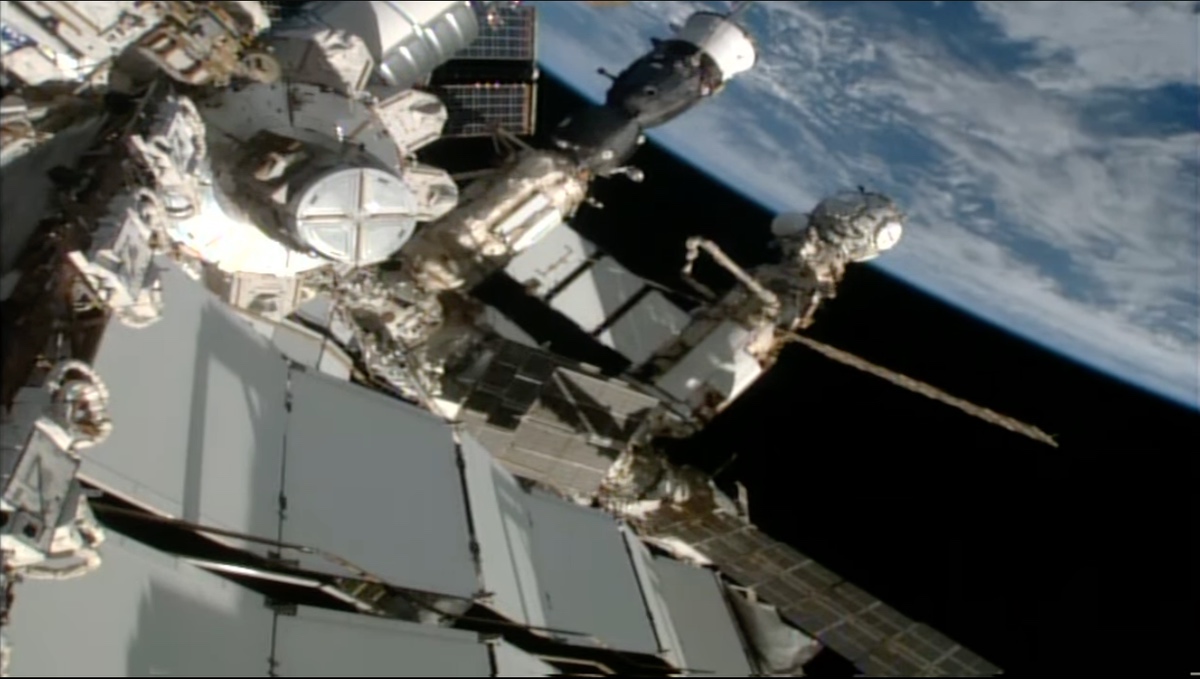WASHINGTON — A radiator on the Russian segment of the International Space Station started leaking coolant Oct. 9, the third such incident involving Russian hardware at the station in less than a year.
NASA said in a statement that flight controllers noticed flakes coming from one of two radiators on the Nauka module on the station’s Russian segment at around 1 p.m. Eastern. That module, also known as the Multipurpose Laboratory Module (MLM), was installed on the station in July 2021.
Flight controllers informed the station’s crew, who were able to visually confirm the leak. “Yeah, there’s a leak coming from the radiator on MLM,” NASA astronaut Jasmin Moghbeli told controllers in audio streamed by NASA online.
It was unclear how much coolant leaked from the radiator and for how long. In its statement, NASA said that Roscosmos informed the agency that the leak was with a backup radiator on Nauka. That radiator was originally on the Rassvet module, launched to the station in 2010, and transferred to Nauka earlier this year as part of a series of spacewalks to outfit Nauka.
In a statement posted to social media, Roscosmos said that the main thermal control system on Nauka is working properly, and that neither station nor its crew are in danger. NASA offered a similar assessment, saying there were “no impacts to the crew or to space station operations.” The station’s crew, though, did close shutters on windows on the U.S. segment of the station to prevent contamination from the leaking coolant.
The incident is the third time in less than a year that a Russian vehicle at the ISS has suffered a coolant leak. In December, the Soyuz MS-22 spacecraft lost coolant three months after arriving at the station. That led Roscosmos to replace that spacecraft with an uncrewed Soyuz spacecraft, Soyuz MS-23, a decision that kept the crew that launched to the station on Soyuz MS-22 in space for an extra six months, returning Sept. 27.
In February, an uncrewed Progress MS-21 cargo spacecraft also experienced a coolant leak. That leak took place just before the spacecraft, which launched the previous October, was scheduled to undock from the station.
The two leaks raised suspicions of a design or manufacturing flaw with the spacecraft. However, Roscosmos concluded that the leaks were caused by impacts with micrometeoroids or orbital debris. NASA officials accepted that conclusion.
“The NASA team has also looked at it, independent of the Russian team, and we also cannot find anything, based on the information we’ve been given by our Russian colleagues, of anything other than some type of external force or debris or something else like that,” said Joel Montalbano, NASA ISS program manager, at a July briefing.
It was unclear if the leak will affect plans for a pair of spacewalks from the U.S. segment. NASA astronaut Loral O’Hara and ESA astronaut Andreas Mogensen are scheduled to perform one spacewalk Oct. 12 to perform station maintenance and collect science samples while O’Hara and Moghbeli will perform another Oct. 20 to conduct additional station maintenance.
